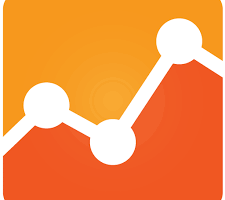Beginners Guide To eCommerce Conversion Rates.

When you are told that you really need to be keeping an eye on your conversion rates do you ever think what are they talking about, what is a conversion rate, why are they important to my business, and how do I find my rate and how can I improve this mystery analytic.
What are eCommerce conversion rates?
When we talk about conversion rates what are we talking about.
Your conversion rate is the number of people that come to your website store and from all these visitors the number of people who actually buy something.
So if 100 visitors come to your website and 1 person buys something that is a 1% conversion rate.
If you have 2 people buying something that is a 2% conversion rate.
What is the importance, well the more people you can convert into buyers the more sales and money you will make.
Case Study
A business selling clothes and has 5500 visitors a month and currently has a 1.3% conversion rate (so for every 100 visitors that come to the website 1.3 will buy something, don’t forget this is an average)
The AOV (Average order value) is £55
- 5500 visitors
- 1.3% conversion rate
- £55 AOV
So 5500 (visitors) x 1.3% (conversion) = 71.5 (buyers) x £55 (AOV) = £3932.50 Sales
Now by making some small changes to the website they manage to increase the conversion rate from 1.3% to 1.5%
So if we run the calculation you will see how a small difference in conversion rate can make a big different in your sales and this is why keeping an eye on your conversion rate is so important.
So 5500 (visitors) x 1.5% (conversion) = 82.5 (buyers) x £55 (AOV) = £4537.50 Sales
So by just increasing the conversion rate by just 0.2% increased the monthly sales £605 now you can see how you can make big gains with small changes.
If the same company managed to get a 2% conversion rate so for every 100 people that come to their website 2 people buy something look what difference this makes to the monthly sales.
So 5500 (visitors) x 2% (conversion) = 110 (buyers) x £55 (AOV) = £6050 Sales
So increasing their conversion rate from the 1.3% in the beginning to 2% increased the sales by £2117.50 and this is without increasing monthly visitors!!
Don’t worry if you don’t have a Google account set up so you can start tracking the conversion rate through Google analytics you can find help with my guide to setting up a Google account.
How do I find the conversion rate for my business?
 You need to go into your Google Analytics – Acquisitions – Channels
You need to go into your Google Analytics – Acquisitions – Channels
You will see the conversion rate on this example is 1.68% as there has been 5645 visitors and 95 transactions 95/5645 x 100 = 1.68% (transactions/traffic x 100 = conversion rate)
You will also be able to see the different channels how much traffic each of them brought to the site and how many sales each channel made*
*Be aware that some channels would have assisted in the purchase but don’t get credit for the sales, these are called assisted conversions and we will cover this in a later blog post.
All you need to focus on now is your conversion rate as it what you expect.
What should my conversion rate be?
Well this all depends on what you are selling but if you can get about a 2.5% conversion rate then you are doing well but of course whatever conversion you have you always want to improve.
Be aware the more new traffic you have the lower you conversion rate can potentially go, why? because new customers do often take longer to trust you to buy something typically a new customer might take as long as 7 visits to your website before making a purchase.
So a returning visitor might convert at 3.5%
A new visitor might only convert at 1% giving you an average of 2.5% conversion rate.
The importance of tracking your conversion rate and improving it.
Well we have shown above in the case study how important conversion rates are and how even increasing it by 0.2% can make a big difference to your sales.
So always look to increase your conversion rate and if it starts to drop this should start ringing alarm bells.
Here is to your success

